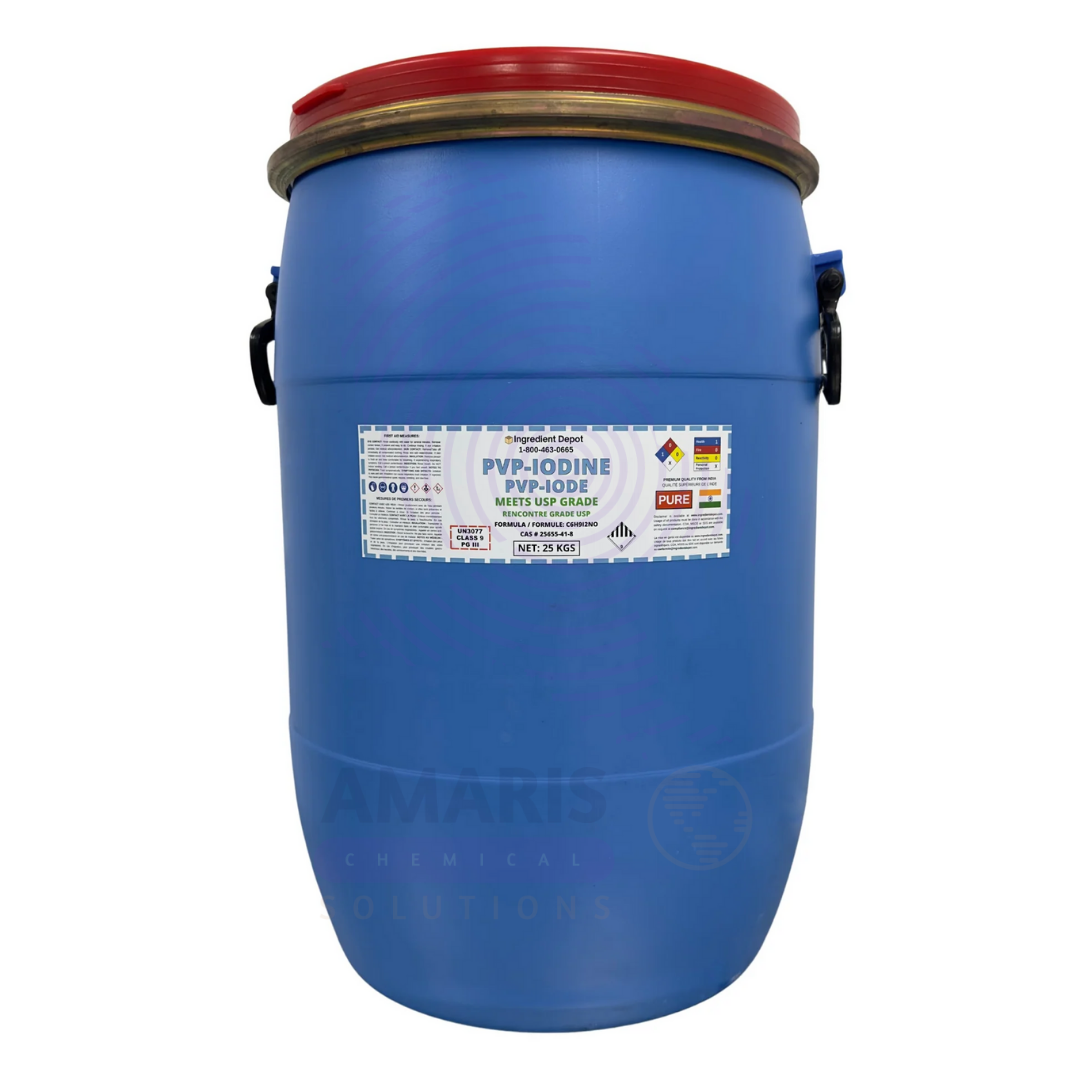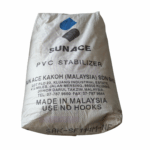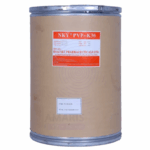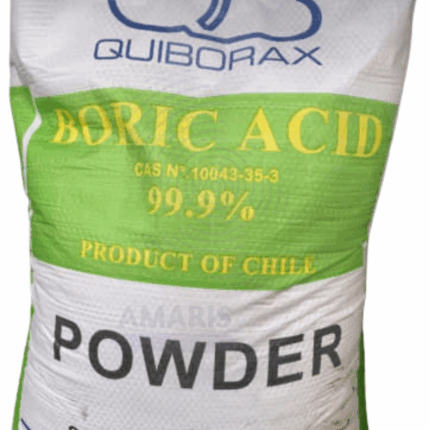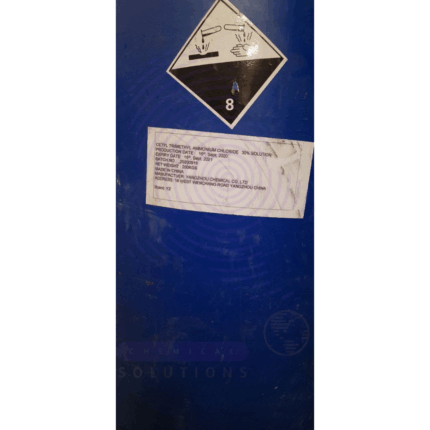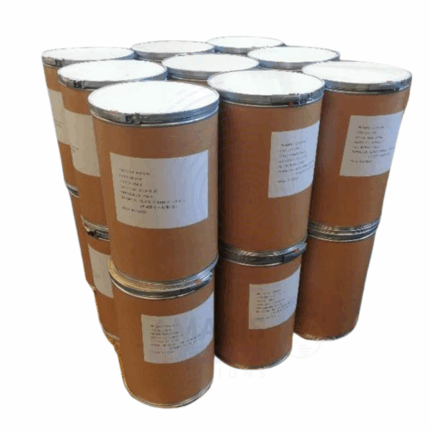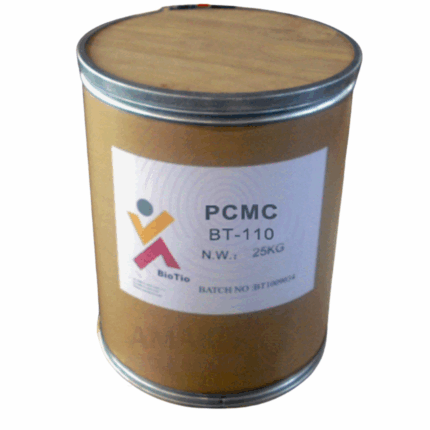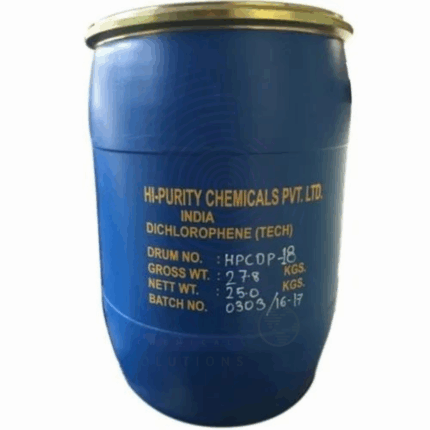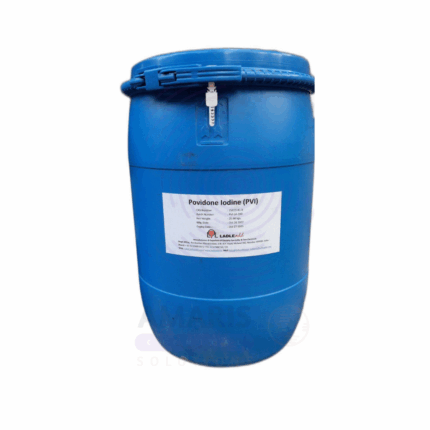PVP Iodine
Whatsapp Order
PVP Iodine is a water-soluble complex of polyvinylpyrrolidone (PVP) and iodine, widely used as a broad-spectrum antiseptic. It delivers controlled iodine release, providing effective antimicrobial action against bacteria, viruses, fungi, and protozoa. This preparation is favored for its ease of application, reduced irritation compared to tinctures, and stability in aqueous solutions. PVP Iodine 10% is commonly used in medical, veterinary, and personal care settings for disinfection and wound treatment.
Description
Table of Contents
Toggle
PVP Iodine
Primary Uses
- Medical & Healthcare
- Used as a topical antiseptic for preoperative skin preparation and wound cleaning.
- Applied in treatment and prevention of minor cuts, abrasions, burns, and infections.
- Employed in surgical scrubs and hand sanitizers for healthcare professionals.
- Dental Care
- Used as an oral disinfectant in mouthwashes and gargles to reduce oral microbial load.
- Applied in the management of oral mucosal infections and periodontal therapy.
- Veterinary Medicine
- Used for disinfecting animal skin and wounds.
- Employed in surgical preparation and post-operative care in veterinary clinics.
- Personal Care & Hygiene
- Incorporated in antiseptic creams, ointments, and washes for household first aid.
- Used in feminine hygiene products and skin cleansers for infection prevention.
Secondary Uses
- Water Treatment
- Occasionally used for disinfecting drinking water in emergency or field conditions.
- Laboratory & Research
- Used as a microbial control agent in microbiology labs and research settings.
- Cosmetics
- Incorporated in formulations requiring antimicrobial preservation without harsh solvents.
- Food Industry
- Employed in sanitizing food contact surfaces and equipment in food processing facilities (non-food additive).
KEY PRODUCT FEATURES
1. Basic Identification Attributes
- Chemical Name (IUPAC): Poly(1-vinyl-2-pyrrolidone)-iodine complex
- Common/Trade Name: PVP Iodine 10%
- CAS Number: 25655-41-8 (PVP), 7553-56-2 (iodine)
- HS Code: 3004.90.90
- Synonyms: Povidone-iodine 10%; Betadine (brand)
2. Physical & Chemical Properties
- Physical State: Aqueous solution
- Color & Odor: Brownish-red; characteristic iodine odor
- pH: Approximately 3.5–5.5
- Solubility: Soluble in water
- Iodine Content: Typically 10% available iodine by weight
3. Safety & Hazard Attributes
- GHS Classification: Eye irritant, skin sensitizer (depending on concentration)
- Toxicity: Low systemic toxicity when used topically; avoid ingestion and prolonged skin exposure
- Exposure Limits: Use as per recommended medical guidelines
4. Storage & Handling Attributes
- Storage Conditions: Store in a cool, dry place protected from light and heat
- Container Type: Supplied in plastic or glass bottles with secure caps
- Shelf Life: Typically 2 years if stored properly
- Handling Precautions: Avoid contact with eyes and mucous membranes; use gloves when applying to large wounds
5. Regulatory & Compliance Attributes
- Complies with USP, BP, and EP pharmacopoeial standards for antiseptics
- Approved by FDA and EMA for topical antiseptic use
- Manufactured in GMP-certified pharmaceutical facilities
6. Environmental & Health Impact
- Biodegradability: Biodegradable components; iodine may be toxic to aquatic life in large quantities
- Ecotoxicity: Moderate ecotoxicity; avoid disposal into waterways
- Bioaccumulation: Not significant
SAFETY HANDLING PRECAUTIONS
Safety Handling Precautions
- PPE Required: Gloves recommended during application; eye protection if splashing possible
- Handling Guidelines: Use in well-ventilated areas; avoid ingestion and prolonged skin contact
- Storage Measures: Keep containers tightly closed and stored in a dry, cool environment away from direct sunlight
First Aid Measures
- Inhalation: Move to fresh air if respiratory irritation occurs
- Skin Contact: Wash with soap and water; discontinue use if irritation develops
- Eye Contact: Rinse immediately with plenty of water for at least 15 minutes; seek medical attention
- Ingestion: Do not induce vomiting; seek immediate medical help
Firefighting Measures
- Fire Hazards: Non-flammable aqueous solution
- Extinguishing Media: Use water spray, foam, dry chemical, or CO₂ on surrounding fire
- Special Precautions: None specific; standard firefighting protective equipment recommended
- Hazardous Combustion Products: May release iodine vapors if heated to decomposition
Related products
Boric Acid
Boric Acid, chemically known as hydrogen borate or boracic acid, is a weak, monobasic Lewis acid of boron. It appears as a white, crystalline powder or granules that are odorless and slightly soluble in water. Boric Acid is commonly used in antiseptics, insecticides, flame retardants, and as a buffering agent in various industrial and pharmaceutical applications. Due to its mild antiseptic and antifungal properties, it is often used in ophthalmic, dermatologic, and other personal care formulations. It also plays a key role in glass and ceramics manufacturing as well as in agriculture.
Cetyl Trimethyl Ammonium Chloride
Cetyl Trimethyl Ammonium Chloride (CTAC) is a cationic surfactant and quaternary ammonium compound characterized by a long hydrophobic cetyl (C16) alkyl chain and a positively charged ammonium head group. It appears as a white to pale yellow powder or flakes, soluble in water, and exhibits strong surface-active properties. CTAC is widely used in cosmetics, personal care, and industrial applications for its excellent conditioning, antistatic, emulsifying, and disinfectant capabilities. It functions primarily as a fabric softener, hair conditioner, and antimicrobial agent.
Chlorobutanol BP
Chlorobutanol BP (also known as 1,1,1-Trichloro-2-methyl-2-propanol) is a white crystalline solid or powder, with a slight camphor-like odor and a bitter taste. It is a multifunctional preservative, anesthetic, and antimicrobial agent commonly used in pharmaceutical, cosmetic, and personal care products. Chlorobutanol exhibits bacteriostatic and fungistatic properties, making it effective in preventing microbial contamination in aqueous formulations. It also possesses mild local anesthetic effects, frequently used in ophthalmic and injectable preparations as a preservative and stabilizer.
Chlorocresol BP
Chlorocresol BP, also known as PCMC (Para-Chlorometa-Cresol), is a white to off-white crystalline powder with a characteristic phenolic odor. It is a chlorinated phenol derivative widely used as a broad-spectrum antimicrobial preservative. It exhibits effective bactericidal and fungicidal activity, making it a preferred preservative in pharmaceutical, cosmetic, and personal care products. Chlorocresol is valued for its stability, solubility in aqueous and alcoholic systems, and compatibility with various formulation types. It helps inhibit microbial growth, thereby enhancing product shelf life and safety.
Dichlorophene Technical
Dichlorophene Technical (also known as 2,2'-Methylenebis(4-chlorophenol)) is a chlorinated phenolic compound used primarily as an antimicrobial agent and disinfectant. It appears as a white to pale yellow crystalline powder with a characteristic phenolic odor. Known for its potent bactericidal and fungicidal properties, Dichlorophene is widely used in pharmaceutical formulations, personal care products, and industrial disinfectants. The “Technical” grade refers to its industrial or bulk purity form used as a raw material in manufacturing.
Naphthalene Balls
Napthalene Balls are solid, crystalline balls made primarily of naphthalene, a white, volatile, aromatic hydrocarbon derived from coal tar or petroleum refining. Known for their strong, distinctive odor, naphthalene balls are widely used as moth repellents and deodorizing agents. Due to their sublimation property, they slowly vaporize at room temperature, releasing fumes that are toxic to moths and insects. They find broad applications in household pest control, industrial storage protection, and chemical manufacturing.
Povidone Iodide BP
Povidone Iodide BP is a water-soluble complex of iodine with the synthetic polymer polyvinylpyrrolidone (PVP). It acts as a broad-spectrum antiseptic effective against bacteria, fungi, viruses, and protozoa. Widely used in medical, pharmaceutical, and veterinary fields, Povidone Iodine provides sustained iodine release, minimizing irritation while offering rapid antimicrobial action. It is essential for wound care, surgical preparation, and infection control.
Santophene
Santophene (4-chloro-2-benzylphenol) is a chlorinated phenolic compound used primarily as a biocide and preservative in various industrial applications. It exhibits strong antimicrobial properties, effectively controlling the growth of bacteria, fungi, and algae. This compound is widely applied in coatings, paints, wood preservation, and water treatment to protect materials from microbial degradation and extend their service life.


 Preservatives(food)
Preservatives(food) Flavor Enhancers
Flavor Enhancers Acidulants
Acidulants Sweeteners
Sweeteners Antioxidants
Antioxidants Colorants(food)
Colorants(food) Nutraceutical Ingredients (food)
Nutraceutical Ingredients (food) Nutrient Supplements
Nutrient Supplements Emulsifiers
Emulsifiers
 Collectors
Collectors Dust Suppressants
Dust Suppressants Explosives and Blasting Agents
Explosives and Blasting Agents Flocculants and Coagulants
Flocculants and Coagulants Frothers
Frothers Leaching Agents
Leaching Agents pH Modifiers
pH Modifiers Precious Metal Extraction Agents
Precious Metal Extraction Agents
 Antioxidants(plastic)
Antioxidants(plastic) Colorants (Pigments, Dyes)
Colorants (Pigments, Dyes) Fillers and Reinforcements
Fillers and Reinforcements Flame Retardants
Flame Retardants Monomers
Monomers Plasticizers
Plasticizers Polymerization Initiators
Polymerization Initiators Stabilizers (UV, Heat)
Stabilizers (UV, Heat)
 Antifoaming Agents
Antifoaming Agents Chelating Agents
Chelating Agents Coagulants and Flocculants
Coagulants and Flocculants Corrosion Inhibitors
Corrosion Inhibitors Disinfectants and Biocides
Disinfectants and Biocides Oxidizing Agents
Oxidizing Agents pH Adjusters
pH Adjusters Scale Inhibitors( water)
Scale Inhibitors( water)
 Antioxidants(cosmetic)
Antioxidants(cosmetic) Emollients
Emollients Fragrances and Essential Oils
Fragrances and Essential Oils Humectants
Humectants Preservatives
Preservatives Surfactants(cosmetic)
Surfactants(cosmetic) Thickeners
Thickeners UV Filters
UV Filters
 Fertilizers
Fertilizers Soil Conditioners
Soil Conditioners Plant Growth Regulators
Plant Growth Regulators Animal Feed Additives
Animal Feed Additives Biostimulants
Biostimulants Pesticides (Herbicides, Insecticides, Fungicides)
Pesticides (Herbicides, Insecticides, Fungicides)
 Active Pharmaceutical Ingredients (APIs)
Active Pharmaceutical Ingredients (APIs) Excipients
Excipients Solvents(pharmaceutical)
Solvents(pharmaceutical) Antibiotics
Antibiotics Antiseptics and Disinfectants
Antiseptics and Disinfectants Vaccine Adjuvants
Vaccine Adjuvants Nutraceutical Ingredients (pharmaceutical)
Nutraceutical Ingredients (pharmaceutical) Analgesics & Antipyretics
Analgesics & Antipyretics
 Analytical Reagents
Analytical Reagents Solvents(lab)
Solvents(lab) Chromatography Chemicals
Chromatography Chemicals Spectroscopy Reagents
Spectroscopy Reagents microbiology-and-cell-culture-reagents
microbiology-and-cell-culture-reagents Molecular Biology Reagents
Molecular Biology Reagents Biochemical Reagents
Biochemical Reagents Inorganic and Organic Standards
Inorganic and Organic Standards Laboratory Safety Chemicals
Laboratory Safety Chemicals Specialty Laboratory Chemicals(Special Laboratory Equipment)
Specialty Laboratory Chemicals(Special Laboratory Equipment)
 Demulsifiers
Demulsifiers Hydraulic Fracturing Fluids
Hydraulic Fracturing Fluids Scale Inhibitors(oil)
Scale Inhibitors(oil) Surfactants(oil)
Surfactants(oil) Drilling Fluids
Drilling Fluids
 Dyes and Pigments
Dyes and Pigments Bleaching Agents
Bleaching Agents Softening Agents
Softening Agents Finishing Agents
Finishing Agents Antistatic Agents
Antistatic Agents
 Admixtures
Admixtures Waterproofing Agents
Waterproofing Agents Sealants and Adhesives
Sealants and Adhesives Curing Compounds
Curing Compounds Concrete Repair Chemicals
Concrete Repair Chemicals Anti-Corrosion Coatings
Anti-Corrosion Coatings
 Surfactants(cleaning)
Surfactants(cleaning) Builders
Builders Enzymes
Enzymes Solvents (Cleaning)
Solvents (Cleaning) Fragrances
Fragrances
 Electronic Chemicals
Electronic Chemicals Catalysts
Catalysts Lubricants
Lubricants Photographic Chemicals
Photographic Chemicals Refrigerants
Refrigerants Automotive chemicals
Automotive chemicals Pyrotechnic Chemicals
Pyrotechnic Chemicals
 Biodegradable Surfactants
Biodegradable Surfactants Bio-based Solvents
Bio-based Solvents Renewable Polymers
Renewable Polymers Carbon Capture Chemicals
Carbon Capture Chemicals Wastewater Treatment Chemicals
Wastewater Treatment Chemicals
 Pigments
Pigments Solvents(paint)
Solvents(paint) Specialty Coatings
Specialty Coatings Binders/Resins
Binders/Resins Additives
Additives Driers
Driers Anti-Corrosion Agents
Anti-Corrosion Agents Functional Coatings
Functional Coatings Application-Specific Coatings
Application-Specific Coatings
 Fresh Herbs
Fresh Herbs Ground Spices
Ground Spices Whole Spices
Whole Spices Spice Blends
Spice Blends Dried Herbs
Dried Herbs
 Leavening Agents
Leavening Agents Dough Conditioners
Dough Conditioners Flour Treatments
Flour Treatments Fat Replacers
Fat Replacers Decoratives
Decoratives Preservatives(baking)
Preservatives(baking)
 Plasticizers & Softeners
Plasticizers & Softeners Reinforcing Agents
Reinforcing Agents Adhesion Promoters
Adhesion Promoters Vulcanizing Agents
Vulcanizing Agents Antidegradants
Antidegradants Blowing Agents
Blowing Agents Fillers & Extenders
Fillers & Extenders Accelerators & Retarders
Accelerators & Retarders